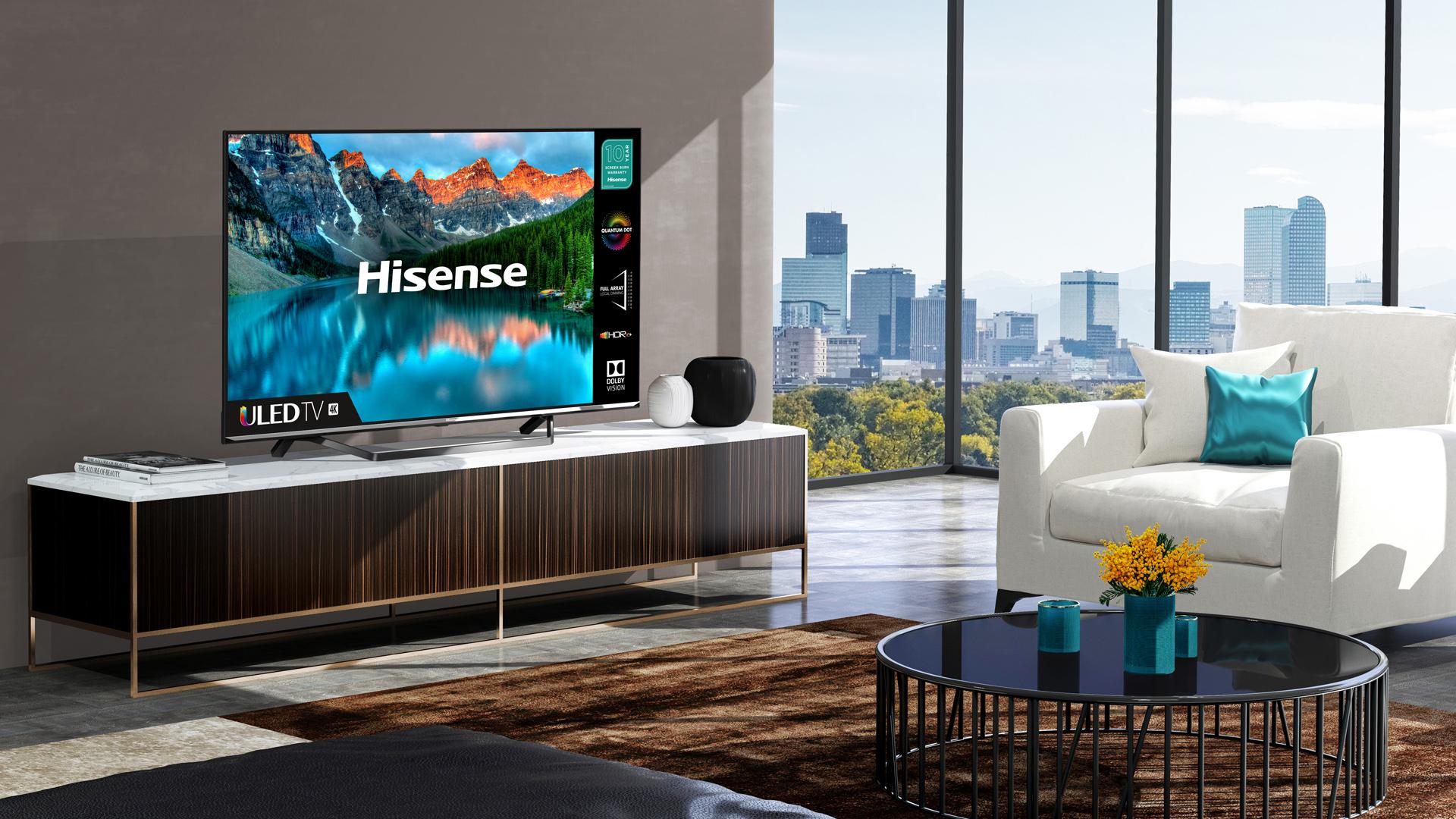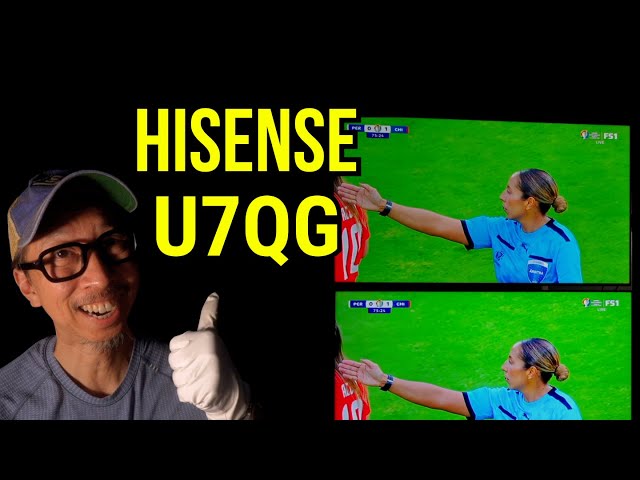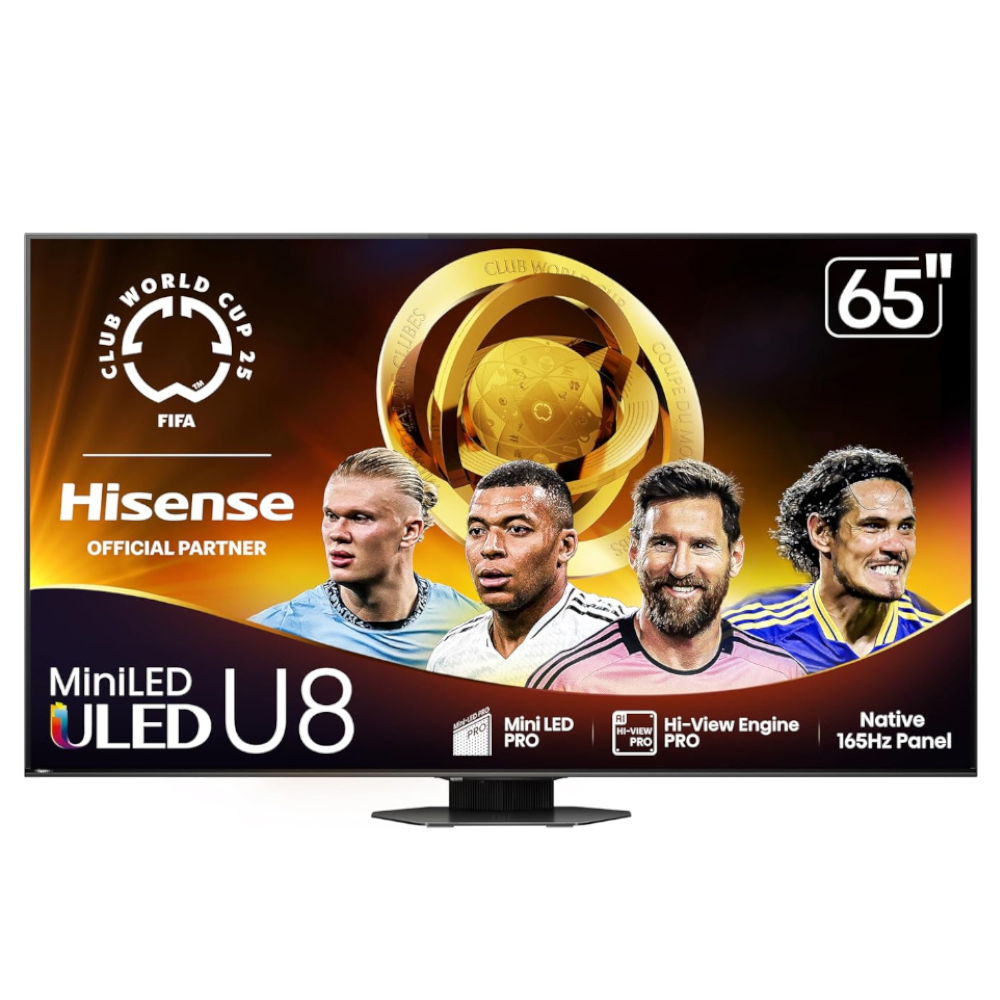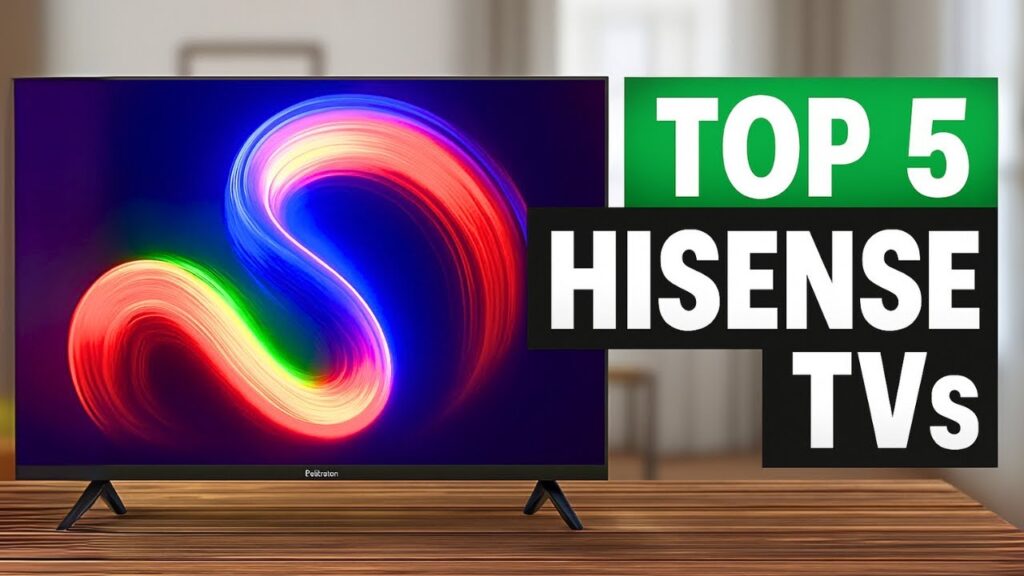Hisense TV Remote Not Working Fix: Simple Troubleshooting Tips and Solutions
When it comes to upgrading your home entertainment setup in 2025, the choice of a TV can be daunting with so many options flooding the market. Among the most talked-about brands, Hisense continues to grow in popularity for offering high-end features at highly competitive prices. If you’re pondering whether to go for the Hisense U7QG or the Hisense U7N, you’re not alone. These two models represent the latest advancements in Hisense’s TV lineup, promising impressive displays for both casual viewers and gaming enthusiasts. In this detailed review, we’ll explore the differences, strengths, and features of these two models to help you decide which one is the best fit for your needs. Main Keyword: Hisense U7QG vs U7N review. As we analyze these two incredible TVs, you’ll discover their specifications, performance, and the value they bring. Whether you’re interested in Hisense TV remote not working fix tips or Hisense U8QG brightness performance review, this guide aims to cover every aspect to help you make an informed purchase.

Overview of Hisense TV Lineup
Hisense has firmly established itself as a leading brand in the global television market by consistently delivering innovative features with attractive price points. Their lineup ranges from budget-friendly models to premium flagship TVs designed to rival high-end brands like Samsung and LG. Headlines in 2025 focus on their MiniLED technology, high refresh rates, and superior color accuracy, making Hisense a go-to choice for consumers craving quality visuals without the hefty price tag. The models discussed in this review—Hisense U7QG, Hisense U7N, and Hisense U8QG—are part of their premium series, tailored for users who prioritize picture quality, gaming performance, and advanced smart features. Hisense’s commitment to persistence in innovation ensures that newer models incorporate the latest technologies, such as over 4,000 dimming zones and peak brightness levels exceeding 10,000 nits on their ultra-premium screens. Understanding where these models fit within the overall lineup can guide you toward the best choice based on your budget, room size, and content preferences. Whether you’re a cinephile, a competitive gamer, or a casual viewer, Hisense features models that meet most demands with remarkable performance and affordability.
Importance of Finding the Right TV
Selecting the perfect TV is more than just choosing the latest model. It involves assessing your viewing habits, understanding the technical specifications, and aligning features with your room environment. An ill-suited TV can lead to frustrations like poor picture quality, color inaccuracies, or even compatibility issues with existing devices. In 2025, choosing between models like Hisense U7QG vs U7N becomes critical because each offers different technologies—MiniLED vs dual backlighting, varying peak brightness levels, and distinct smart features—that influence your viewing experience. For example, if you enjoy vibrant HDR content or bright rooms, the U8QG brightness performance review becomes relevant in helping you select the right model. Moreover, investing in a TV equipped with robust smart features, user-friendly interfaces, and reliable remote controls can significantly enhance your overall experience. This is where additional research, such as understanding how to calibrate Hisense TV picture settings and troubleshooting issues like Hisense TV remote not working fix, can improve your satisfaction with your purchase. Ultimately, finding the right TV involves balancing technical specs, budget, and your personal viewing environment. This guide aims to clarify those aspects, leading you to a confident decision that enriches your home entertainment.
Key Features of Hisense TVs

MiniLED Technology Explained
MiniLED technology represents a revolutionary step in backlighting for LCD televisions, offering the contrast and black levels previously exclusive to OLED screens. Unlike traditional LED TVs, MiniLED panels utilize thousands of tiny LEDs that can be precisely controlled to enhance contrast and brightness. Hisense’s use of MiniLED across their top-tier models ensures viewers get deeper blacks, more vibrant colors, and improved HDR performance. The Hisense U7QG benefits significantly from this tech, featuring over 3,000 dimming zones, effectively delivering cinematic image quality at a competitive price. MiniLED’s advantages extend beyond image quality. They allow for uniform lighting across the screen, reducing glare and blooming artifacts. This technology is especially beneficial when watching HDR content, where high brightness and contrast are critical. Understanding MiniLED technology helps you grasp why models like the Hisense U8QG surpass other LCDs or OLED (which has its own drawbacks). It’s a game-changer for those demanding a brighter, more detailed picture, especially in well-lit rooms. Hisense’s continual advancements in MiniLED manufacturing underline their commitment to delivering TV screens that meet and exceed viewers’ expectations.
Dimming Zones and Their Impact on Picture Quality
Dimming zones are essentially sections of the display with independently controlled lighting — more zones equate to finer control over local contrast. The more dimming zones a television has, the better it can produce deep blacks and bright highlights simultaneously, crucial for HDR content. The Hisense U7QG boasts 3,000 dimming zones, while the U7N sports 2,500 zones—all part of Hisense’s MiniLED platform. In contrast, the Hisense U9N and U8QG push further with over 4,000 and 5,000 zones respectively, delivering even more precise control. The real-world impact of multiple dimming zones is astounding. During a dark scene in a movie or a game that features bright explosions against a dark night sky, these TVs can maintain blacks without washing out bright objects or creating halos — that glow around bright objects in dark scenes. This leads to an immersive viewing experience with minimal blooming artifacts. For gamers or cinephiles, high dimming zone counts translate into enhanced detail and realism. They also reduce eye fatigue in darker environments. Therefore, when evaluating models, consider how many local dimming zones it has, especially if you prefer HDR content or watch in varied lighting conditions. This feature decisively influences picture quality and overall viewing pleasure.
Refresh Rates: Why They Matter for Gaming
Refresh rate, measured in Hertz , indicates how many times per second your TV updates with new images. A higher refresh rate ensures smoother motion, which is especially desirable for fast-paced gaming, sports, and action movies. Most modern models like the Hisense U7QG and U7N come with at least 120Hz native refresh rates. This high refresh rate ensures that rapid movements, such as in first-person shooters or racing games, appear fluid without motion blur. Even for casual viewers, a higher refresh rate results in a more natural and comfortable viewing experience. Beyond refresh rates, the TV’s support for Variable Refresh Rate (VRR) technology, which minimizes screen tearing during gaming, elevates gaming performance significantly. The Hisense U7QG supports VRR, making it a compelling choice for gamers who want responsiveness combined with stunning visuals. Additionally, a fast refresh rate coupled with low input lag (a delay between a command and its appearance on-screen) is vital for competitive gameplay. The Hisense U7N features low input lag, enhancing responsiveness and reaction time during intense gaming sessions. In conclusion, the importance of refresh rates in gaming cannot be overstated. Picking a TV that balances this feature with picture quality and smart functionality results in a more enjoyable, immersive experience tailored to your needs.
Hisense U7QG vs U7N Review

Choosing the right model among the latest offerings is critical, especially when they come with seemingly similar specifications but distinct features. The Hisense U7QG and U7N are both remarkable options, yet they cater to slightly different preferences, budgets, and viewing environments. This comparison will dissect their price, design, picture quality, gaming capabilities, and smart features, helping you spot the differences and identify the best fit.
Price Comparison and Variants
Pricing is often the decisive factor when choosing between competing models. The Hisense U7QG ranges from approximately $799 for the 55-inch variant up to $1,999 for the larger 85-inch screen. It’s positioned as a slightly premium model within Hisense’s lineup, offering top-tier MiniLED technology and peak brightness. The U7N is somewhat more budget-friendly, with prices starting at around $699 for the 55-inch and going up to $1,799 for the 85-inch version. While it shares many core features with the U7QG, such as a 4K resolution and 120Hz refresh rate, it comes with a slightly lesser dimming zone count and peak brightness. For buyers strictly looking for the best value, the U7N offers substantial performance at a lower price point, making it an excellent pick for most households. On the other hand, if your priority is top-tier HDR performance and slightly enhanced brightness and contrast, the Hisense U7QG warrants the extra investment. Price comparison tables such as this can aid buyers in visualizing their options:
| Model | Size (Inches) | Price Range (USD) | Dimming Zones | Peak Brightness | Key Features |
|---|---|---|---|---|---|
| Hisense U7QG | 55-85 | $799 – $1999 | 3000 | 3000 nits | MiniLED, 165Hz, VRR, Dolby Atmos |
| Hisense U7N | 55-85 | $699 – $1799 | 2500 | 2500 nits | MiniLED, 4K@120Hz, Low input lag |
Design and Build Quality
Both models feature sleek, modern designs with slim bezels and premium-looking stands. The U7QG adopts an artful, minimal aesthetic with a metal frame that emits a high-end vibe—perfect for elegant living rooms and media centers. Its thickness is optimized to balance durability with sleekness, allowing seamless wall mounting. The U7N, while slightly less refined in materials, still maintains a clean aesthetic. It offers a slightly lighter feel and a versatile stand that fits easily into various room setups. The difference in build quality might be noticeable on closer inspection, but both models are crafted to withstand daily use. The choice boils down to personal preference for style and budget. If you desire a visually stunning, premium feel, the U7QG edge in design nuances makes it worth considering despite a higher price.
Picture Quality: Comparing Brightness and Color Accuracy
This is where the Hisense U7QG vs U7N review truly reveals differences. The U7QG excels with its over 3,000 local dimming zones that produce stunning contrast and black levels, especially in HDR content. Its peak brightness of 3,000 nits ensures vibrant highlights on the biggest screen sizes, making every scene pop vividly. Meanwhile, the U7N handles HDR well, with a peak brightness of approximately 2,500 nits. Its fewer dimming zones may cause slight blooming in complex scenes, but overall, it provides excellent picture quality for most viewing environments. Its color accuracy, with support for wide DCI-P3 coverage, complements its brightness capabilities, delivering rich, lifelike images. Personal analysis suggests that for those who frequently watch HDR movies or play HDR games, U7QG is superior—its higher brightness and contrast make the experience more immersive. Conversely, for casual viewers or in moderately lit rooms, the U7N remains an excellent choice.
Gaming Performance: Input Lag and Refresh Rate
Gaming enthusiasts prioritize low input lag and high refresh rates. The Hisense U7QG supports a native 165Hz refresh rate and VRR support, ensuring fluid gameplay with less motion blur and tearing. Its rapid response times allow for competitive gaming in titles like FPS shooters or racing simulations. The U7N is optimized for gaming with a 120Hz native refresh rate and similarly low input lag, though it lacks some of the advanced motion smoothing features found in the U7QG. Its performance makes it suitable for casual or competitive gaming, especially with modern consoles and PCs. The difference in refresh rate and VRR support could be crucial for serious gamers. If high performance is your goal, particularly during fast-paced sequences, the Hisense U7QG offers a slight edge. However, both models excel in delivering responsive gaming experiences.
Audio Capabilities: Sound Systems Breakdown
Audio is often overlooked but just as critical as visual performance. The U7QG comes equipped with a 60W 2.1.2 speaker system featuring Dolby Atmos support, creating a multidimensional soundstage. It provides rich bass, clear dialogue, and immersive audio that complements high dynamic range visuals. The U7N features a similar sound system but with slightly lower wattage and fewer processing features. For those seeking premium sound without additional equipment, the built-in systems on these models are quite sufficient, but pairing with a soundbar can elevate your experience further. For audiophiles or those with dedicated audio setups, understanding sound capabilities helps guide purchasing decisions. Incorporating Hisense TV remote not working fix tips or exploring external audio options can enhance overall satisfaction.
Smart Features: Google TV Interface Performance
Both models run on the latest Google TV platform, providing access to a vast array of streaming apps, voice command capabilities, and smart home integrations. The U7QG boasts a faster, more responsive interface with smoother navigation, thanks to more advanced processors and software optimizations. The U7N also offers a seamless user experience but may occasionally experience slight lag during multitasking or app switching. Both support voice remotes, app updates, and screen mirroring. The platform’s user-friendly design makes content discovery effortless, especially for those already invested in the Google ecosystem. If ease of use and quick access to all streaming services are priorities, both models deliver, but the U7QG has a slight advantage for tech-savvy users.
Hisense U8QG Brightness Performance Review

Brightness performance is particularly critical when choosing a TV, especially for HDR content. The Hisense U8QG stands out with a peak brightness exceeding 10,000 nits—a level that easily outperforms many competitors, including the U7 series.
Peak Brightness Specifications
The U8QG boasts a peak brightness of over 10,000 nits in HDR mode, enabling it to produce vivid highlights and impactful contrast scenes. This high brightness is achieved through advancements in MiniLED technology and larger dimming zones, ensuring that bright scenes do not wash out or cause blooming.
Real-World Performance: Viewing in Various Lighting Conditions
In daily use, the U8QG impresses whether you’re watching in a dim or a brightly lit room. Its exceptional brightness ensures that HDR content like Dolby Vision or HDR10+ appears vibrant and detailed even during daytime. The control of glare and reflections is improved thanks to the high peak brightness, minimizing distractions caused by ambient light. In comparison to the U7QG, the U8QG delivers a noticeably more luminous image with enhanced contrast, making it ideal for users who prioritize top-tier HDR performance. However, for most consumers, the existing levels on the U7 series already provide excellent HDR experiences.
Impact of Brightness on HDR Content
High brightness levels significantly elevate HDR content realism. Scenes with intense sunlight, explosions, or fireworks appear more lifelike on the U8QG due to the brilliance of highlights. It also improves shadow detail and depth perception, adding realism to both movies and video games. While the U7QG offers admirable brightness, the U8QG takes HDR performance to an elite level—great for immersing yourself in cinematic or gaming worlds. This makes it a worthy investment for enthusiasts seeking perfection in visual fidelity.
Calibrating Hisense TV Picture Settings
Importance of Calibration for Optimal Viewing Experience
While factory settings provide a decent baseline, personalized calibration guarantees the most accurate and vibrant picture. Proper calibration ensures you’re viewing content with the intended colors, contrast, and brightness, enhancing every scene’s detail and realism. Incorrect settings can lead to washed-out images, overly dark scenes, or unnatural hues. Whether you’re watching movies, sports, or gaming, fine-tuning your Hisense TV’s picture settings is essential to unlock its full potential.
Step-by-Step Guide to Calibrating Picture Settings
Start by accessing the picture menu on your Hisense TV and selecting the calibration mode. Use a high-quality calibration disc or Blu-ray, or rely on built-in test patterns available through various apps or streaming services. Adjust the backlight first, setting it higher for HDR content and lower for SDR viewing based on ambient lighting. Next, fine-tune the contrast and brightness, ensuring pure blacks without losing shadow detail. Color saturation should be balanced—neither too dull nor overly vivid—by adjusting the color and tint options. For motion clarity, tweak the motion smoothing features, which can produce a soap-opera effect if overused. For precise calibration, tools like a colorimeter or the how to calibrate Hisense TV picture settings guide from expert sources can be invaluable.
Recommended Settings for Different Content Types
- Movies HDR Content: Maximize backlight and contrast, with color saturation at a natural level. Enable HDR-specific settings for peaks.
- Gaming: Keep low input lag enabled, reduce motion smoothing, and optimize contrast for responsiveness.
- Sports Daytime Viewing: Increase brightness and anti-glare settings, ensuring vividness without reflections.
Regular calibration adjusts these settings based on changes in ambient lighting and personal preferences, guaranteeing the best viewing experience all year round.
Troubleshooting Hisense TV Remote Not Working
Common Issues and Quick Fixes
Remote issues are frustrating but often easily fixable. Check if the remote’s batteries need replacing. Sometimes, the remote may become unresponsive due to signal interference or software glitches. Ensure there is a clear line of sight between the remote and the TV sensor. Restarting the TV or resetting the remote can often resolve temporary connectivity problems.
Battery Replacement and Connection Tips
Replacing old batteries with fresh, high-quality alkaline batteries can restore remote functionality. For many models, removing the back cover and inserting batteries correctly (+/-) will fix most issues. If your remote uses rechargeable batteries, ensure they are charged. For persistent issues, re-pair the remote to the TV via the settings menu, following on-screen instructions or the Hisense TV remote not working fix guide, which provides step-by-step solutions.
Alternative Control Methods: Using Your Smartphone
Hisense TVs often support control via their dedicated app, compatible with Android and iOS devices. Downloading and configuring this app can serve as a temporary or permanent alternative when the remote fails. Using your smartphone as a remote not only offers a backup control method but also allows for easier keyboard and voice input, enhancing navigation and search functions.
Mistakes to Avoid When Choosing Hisense TVs
Overlooking Specs vs. Price
It’s tempting to compare models based solely on price or spec lists. However, understanding the real-world implications of features like dimming zones, peak brightness, and refresh rate is essential. A cheaper model may lack critical features necessary for your viewing preferences, such as proper HDR performance or low input lag for gaming. Always weigh the specifications against your usage needs to avoid paying extra for features you’ll never use, or vice versa.
Ignoring User Reviews and Expert Opinions
There’s immense value in reading customer reviews and expert assessments before buying a new Hisense TV. User feedback highlights common issues, like software bugs or hardware durability, that specifications alone won’t reveal. Hisense TV remote not working fix tips from users can save you future inconvenience. Professional reviews provide insights into real-world performance, calibration tips, and whether certain models truly deliver on advertised features like Hisense U8QG brightness performance or interface smoothness.
Failing to Consider Room Size and Viewing Distance
One size doesn’t fit all; selecting a TV of the appropriate size for your room ensures optimal viewing. Larger screens are ideal for spacious living rooms, where viewing distances are longer, while smaller sizes suit bedrooms or small apartments. If unsure, refer to recommended viewing distances based on TV size. This avoids eye strain or compromised image quality, ensuring your investment is suited to your environment.
Summary of Top Hisense Models
Quick Overview of the U7QG, U7N, and U8QG
Hisense U7QG: The flagship of the U7 series with over 3,000 dimming zones, peak brightness of 3,000 nits, and gaming features like 165Hz refresh rate and VRR support. Perfect for cinephiles and serious gamers. Hisense U7N: Slightly more affordable, with nearly identical core features but fewer dimming zones and peak brightness. An excellent all-around choice for general use. Hisense U8QG: The most premium among these, with ultra-high peak brightness (over 10,000 nits), over 5,000 local dimming zones, and advanced gaming and HDR capabilities. Ideal for enthusiast consumers who demand perfection.
Comparison of Audio and Visual Features
| Model | Dimming Zones | Peak Brightness | Refresh Rate | Sound System | Smart Platform |
|---|---|---|---|---|---|
| U7QG | 3000 | 3000 nits | 165Hz | 60W Dolby Atmos | Google TV |
| U7N | 2500 | 2500 nits | 120Hz | Similar but lower wattage | Google TV |
| U8QG | 5000+ | 10,000+ nits | 120Hz+ | High-end immersive sound | Google TV |
Recommendations Based on User Needs
If you want the best in picture fidelity and gaming, the Hisense U7QG is the superior choice. For those on a tighter budget but still demanding high-quality visuals, U7N offers excellent value. For ultimate HDR and brightness performance, especially in a dedicated cinema or gaming room, U8QG stands out.
Frequently Asked Questions
How does the U7QG compare to more expensive brands?
While brands like Samsung or LG may offer OLED panels with perfect black levels, the Hisense U7QG provides one of the highest-performing MiniLED screens within its price range. Its brightness, contrast, and smart features rival premium models, making it an excellent pick for those seeking Best performance at a more affordable price point.
What is miniLED, and why should I choose it over OLED?
MiniLED offers many advantages, such as higher peak brightness and longer lifespan compared to OLED—especially important in well-lit rooms. Unlike OLED, MiniLED screens are less prone to burn-in issues. A Hisense TV remote not working fix can sometimes be more common in certain models, but overall, MiniLED combines durability with stellar picture quality.
How long can I expect my Hisense TV to last?
With proper care, a Hisense TV can last over 7-10 years, depending on usage. Modern LED and MiniLED panels are robust, and features like Hisense U8QG brightness performance review confirm the durability of their major components.
Do Hisense TVs support all streaming services?
Yes, Hisense TVs run on Google TV, supporting nearly every popular streaming app like Netflix, Disney+, Amazon Prime, and others. Firmware updates keep compatibility current; check for Hisense U7QG vs U7N review updates regularly.
Is warranty and customer service support adequate for Hisense products?
Hisense offers competitive warranty packages, generally one year for parts and labor, with options for extended coverage. Customer reviews commend their support staff, though experiences can vary. Being proactive about Hisense TV remote not working fix and calibration tips saves time and frustration.
## Conclusion
In 2025, Hisense continues to impress with its lineup of cutting-edge TVs like the Hisense U7QG and U7N, offering a compelling blend of advanced MiniLED technology, impressive brightness, and smart features at a fraction of the cost of premium competitors. The Hisense U8QG pushes the envelope further with extraordinary peak brightness, making it ideal for enthusiasts who demand cinematic excellence. Whether you’re a gaming vet, cinephile, or casual viewer, understanding their specifications—like brightness performance and calibration techniques—can help you optimize your viewing experience. Remember to troubleshoot common issues such as Hisense TV remote not working fix and choose appropriate models based on your room size and content preferences. With the right information and careful consideration, you’ll find a Hisense TV that transforms your home entertainment into an immersive adventure. Don’t miss out on exploring Amazon’s Choice selections and taking advantage of the best deals to elevate your TV experience today!







